Disclosure: This article contains affiliate links. We may earn a commission from purchases at no extra cost to you, which helps our travel content.
Standing in Plaza de Armas as the morning sun illuminates Arequipa's sillar facades to a brilliant white, I'm reminded why this UNESCO World Heritage city captured my heart years ago during my first engineering project in South America. The volcanic stone structures aren't just aesthetically striking—they represent centuries of architectural innovation and cultural resilience. While most travelers rush through Arequipa en route to Colca Canyon, I've returned to spend a full week exploring the hidden corners of Peru's White City, where colonial Spanish influence intertwines with deep Andean roots in ways that continue to surprise even this seasoned traveler.
The Engineering Marvel of Sillar Architecture
As a civil engineer, I find myself constantly marveling at Arequipa's architectural ingenuity. The city's iconic white buildings aren't merely aesthetic choices—they represent sophisticated engineering solutions developed centuries ago. The volcanic sillar stone that gives Arequipa its nickname is remarkably resilient against earthquakes, a critical feature in this seismically active region.
During my visit to the Monastery of Santa Catalina, I spent hours examining how the 16th-century builders created structural stability through ingenious arch systems and wall thickness variations. My laser measure became my constant companion as I documented the precise dimensions of these historical structures—a habit that earned me curious glances from other tourists but satisfied my professional curiosity.
The most fascinating aspect is how the sillar construction creates natural temperature regulation. During Arequipa's cool winter mornings, I noticed how the stone absorbs heat, gradually releasing it throughout the chilly evenings—an early example of passive climate control that modern sustainable architecture still emulates.

💡 Pro Tips
- Visit architectural sites between 10am-2pm when the sunlight best highlights the sillar stonework's intricate details
- Join the specialized architecture tour at Santa Catalina Monastery (offered Tuesdays and Thursdays at 11am) for technical insights not covered in standard tours
- Bring a small notebook to sketch interesting architectural details—many buildings don't allow interior photography
Culinary Traditions: Beyond Picanterías
Arequipa's gastronomy deserves its reputation as Peru's culinary capital, but the true food experience extends far beyond the tourist-filled picanterías. My approach to understanding a culture has always been through its food preparation techniques, and Arequipa offers a masterclass in culinary engineering.
I spent a morning with Señora Carmen, whose family has preserved traditional cooking methods for five generations. In her modest home kitchen in the Yanahuara district, I learned that the secret to authentic rocoto relleno isn't just the ingredients but the precise temperature control achieved through clay cookware. My digital food thermometer confirmed what Carmen's experienced hands already knew—the stuffed peppers must maintain an exact temperature gradient to balance the pepper's heat with the cheese's creaminess.
The most memorable meal wasn't at a Michelin-aspiring restaurant but at the Sunday morning Feria Gastronómica in Sachaca district. Here, local families serve dishes like chupe de camarones (shrimp chowder) and ocopa arequipeña (potato dish with creamy sauce) prepared using techniques passed down through generations. The engineering precision in these traditional methods—from stone grinding to clay pot cooking—produces flavors that modern shortcuts simply cannot replicate.

💡 Pro Tips
- Visit the Sachaca food market on Sunday mornings (7am-11am) when local families serve traditional dishes not found in restaurants
- Book a cooking class through Mercado San Camilo for hands-on experience with traditional clay pot cooking techniques
- Request 'medio picante' when ordering spicy dishes—Arequipeño chefs season authentically unless asked otherwise
Textile Traditions: Weaving Mathematical Precision
My engineering mind has always been fascinated by the mathematical precision in traditional textiles, and Arequipa's weaving traditions did not disappoint. In the small workshop of Artesanías Andinas, I spent an afternoon with master weaver Margarita, whose fingers moved with calculator-like precision across her backstrap loom.
What appears decorative to the untrained eye is actually a complex system of mathematical patterns. Margarita demonstrated how traditional Andean textiles encode information through geometric patterns—a form of cultural knowledge preservation that predates written records. Using my digital notebook, I documented the systematic pattern variations that differentiate family lineages and geographic origins.
The most enlightening experience was participating in a natural dyeing workshop in Carmen Alto district. The process combines chemistry, botany, and generational knowledge to achieve specific colors using local plants, minerals, and even insects. I was particularly impressed by the mordant techniques that ensure colorfast textiles without modern chemical fixatives—a sustainable approach that modern textile engineering is only now beginning to appreciate.
For those interested in bringing home authentic textiles, avoid the mass-produced items in tourist markets. Instead, visit the Mundo Alpaca workshop where you can observe the entire process from raw fiber to finished product. My prized purchase was a hand-woven alpaca throw blanket in traditional patterns—significantly more expensive than tourist versions but ethically produced and of heirloom quality.
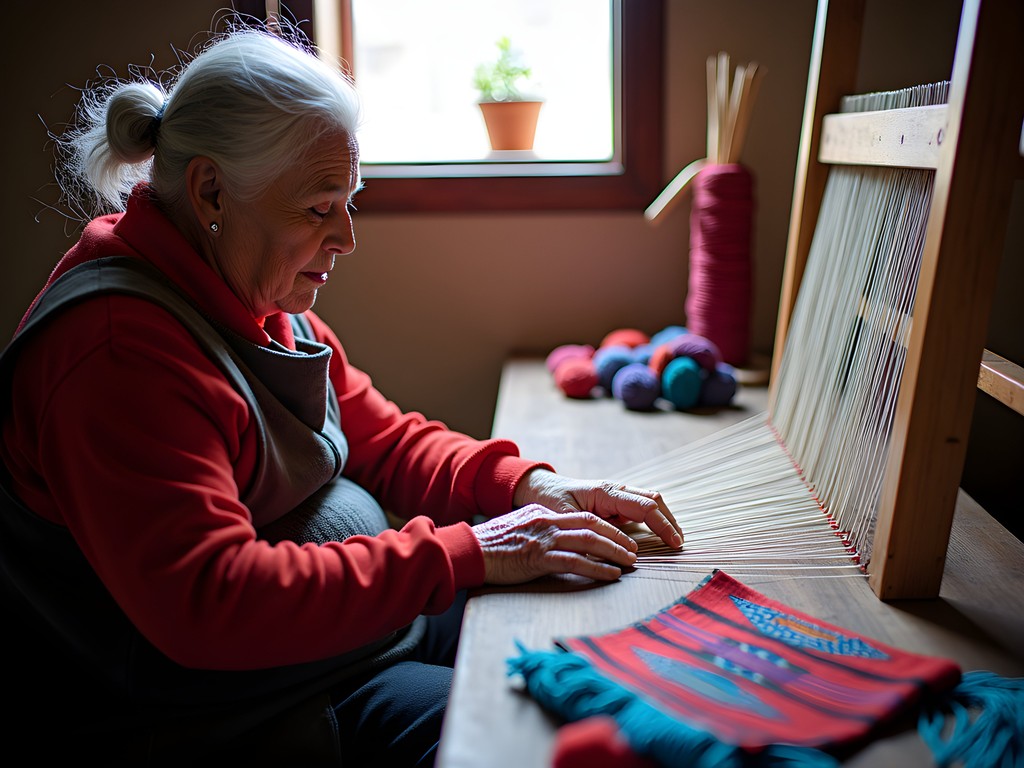
💡 Pro Tips
- Schedule textile workshops at least two days in advance through local organizations like Centro de Textiles Tradicionales del Cusco (they have an Arequipa branch)
- Visit textile workshops in the morning when natural light is best for distinguishing authentic natural dyes from synthetic ones
- Learn the basic difference between alpaca qualities (baby alpaca, suri, huacaya) before shopping to ensure you're getting authentic products
Wellness Traditions: Ancient Meets Modern
My interest in wellness practices has grown alongside my engineering career—I've found that understanding how different cultures approach well-being provides valuable balance to technical work. Arequipa offers fascinating insights into traditional Andean wellness practices that combine spiritual beliefs with practical herbal knowledge.
At the Mercado San Camilo, the medicinal herbs section is where locals shop for remedies long before considering modern pharmaceuticals. I spent a morning with herbalist Doña Juana, who explained how altitude-specific plants address different ailments. My pocket microscope allowed me to examine the structural differences between similar-looking herbs—a level of detail that earned Doña Juana's approval and led to more in-depth knowledge sharing.
The most rejuvenating experience was visiting the thermal baths at Yura, about 30km from the city center. Unlike the commercialized hot springs elsewhere in Peru, these mineral-rich waters are still primarily frequented by locals. The varying temperature pools (ranging from 24°C to 85°C) are naturally stratified due to their proximity to volcanic activity—a geothermal phenomenon that my engineering background helped me appreciate on multiple levels.
For those seeking deeper wellness experiences, I recommend the traditional temazcal (sweat lodge) ceremony offered at Eco Truly Park outside the city. The combination of medicinal herbs, controlled steam, and intention-setting creates a purification experience that left me feeling physically refreshed and mentally centered—a perfect counterbalance to days of intensive cultural exploration.

💡 Pro Tips
- Visit Mercado San Camilo's medicinal herb section with a local guide who can translate the specific uses and preparation methods
- Bring a water bottle with electrolyte hydration tablets when visiting thermal baths to prevent dehydration at Arequipa's altitude
- Schedule wellness activities for your mid-trip days when altitude adjustment and travel fatigue typically peak
Final Thoughts
As I board my flight from Arequipa's airport, my engineer's notebook is filled with sketches of sillar arches, textile pattern calculations, and notes on thermal bath mineral compositions—alongside recipes, personal stories, and contact information from the generous Arequipeños who shared their knowledge with me. This city offers a profound reminder that cultural preservation isn't about freezing traditions in time but about understanding the ingenious solutions our ancestors developed and finding their relevance in contemporary contexts.
Arequipa deserves more than a quick stopover en route to Colca Canyon. Its architectural marvels, culinary innovations, textile mathematics, and wellness traditions offer insights that satisfy both the analytical mind and the cultural soul. For solo travelers willing to venture beyond the standard tourist circuit, Arequipa reveals itself as a living laboratory of cultural resilience and adaptation—qualities I've come to value deeply both in my engineering work and personal explorations.
Whether you're calculating the precise angle of a 16th-century arch or measuring the exact temperature for the perfect rocoto relleno, Arequipa invites you to engage with its heritage through multiple dimensions. I'll return not just as a visitor but as a student of this remarkable city where technical precision and cultural richness are so beautifully intertwined.
✨ Key Takeaways
- Arequipa's architectural heritage represents sophisticated engineering solutions using volcanic sillar stone that modern sustainable design still references
- Authentic culinary experiences are found in local homes and Sunday markets rather than tourist restaurants
- Traditional textiles contain mathematical precision and cultural coding worth understanding before purchasing
- Local wellness practices combine ancestral knowledge with practical applications that provide balance to intensive cultural exploration
📋 Practical Information
Best Time to Visit
May through September (Peruvian winter) for clear skies and comfortable temperatures
Budget Estimate
$30-50 USD daily excluding accommodations
Recommended Duration
5-7 days minimum to explore beyond surface attractions
Difficulty Level
Moderate Due To 2,335m Elevation And Hilly Terrain
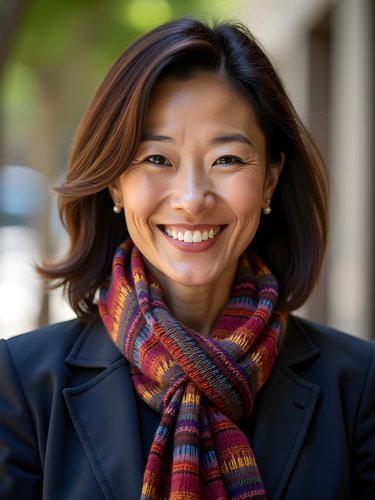
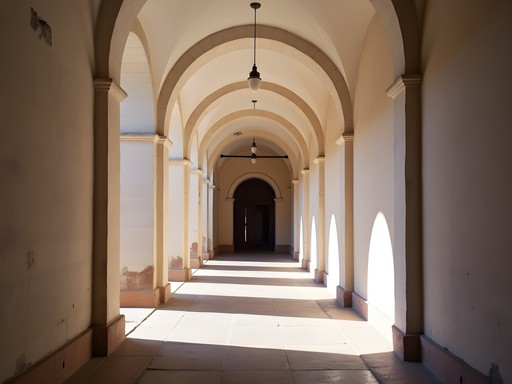
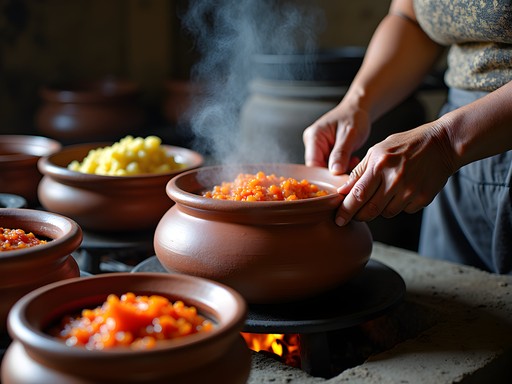
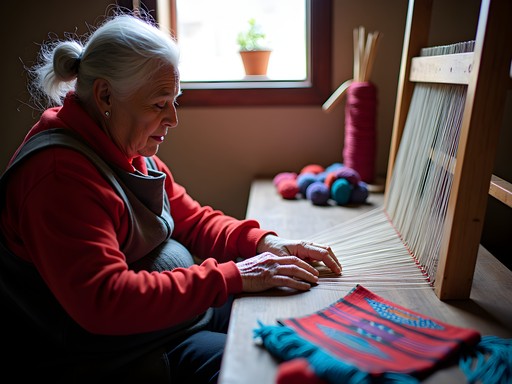
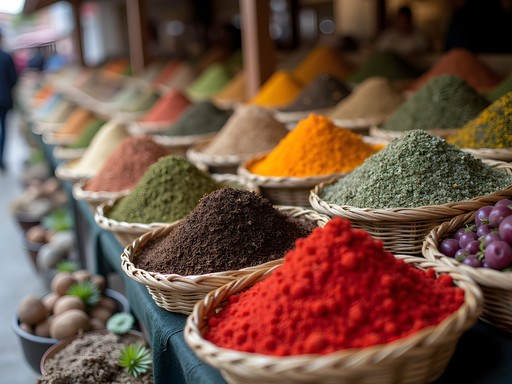


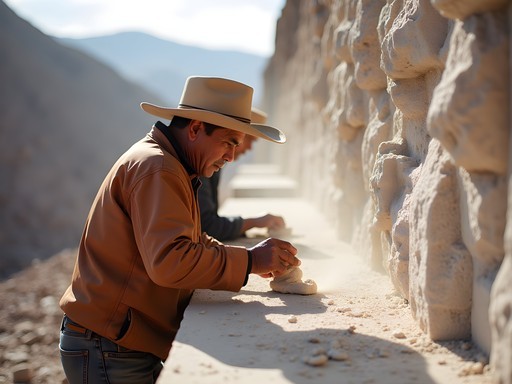







Comments
Sophia Gomez
Amanda, your engineer's perspective on Arequipa's architecture brought back so many memories! I was there last year for a business conference and extended my stay specifically to explore the sillar buildings. What fascinated me most was how the locals have adapted this volcanic stone to withstand earthquakes. I had dinner at La Nueva Palomino (that rocoto relleno was life-changing!) and the owner told me stories about how the sillar arches have saved many buildings during tremors. Did you get a chance to visit the Sillar Route outside the city? It's where they still quarry the stone using traditional methods - absolutely worth the trip for someone with your technical interests!
Amanda Watanabe
Sophia, yes! The Sillar Route was incredible - I actually included it in the full article but had to trim for the excerpt. The quarry workers' techniques haven't changed much in centuries. And La Nueva Palomino was my favorite picantería too!
bluewanderer5289
Is the food very spicy? I'm a bit of a wimp with heat but want to try authentic dishes!
Sophia Gomez
@bluewanderer5289 The rocoto peppers are pretty spicy, but you can ask for 'poco picante' (less spicy) versions at most picanterías. Try the pastel de papa as a safer option - it's delicious and milder!
wanderwalker
I'm fascinated by the textile traditions you mentioned. Are there specific markets or workshops where visitors can see the weaving process or buy authentic textiles?
Amanda Watanabe
Absolutely! Check out Mundo Alpaca - it's a free textile center where you can see the entire process from shearing to weaving. For shopping, San Camilo Market has some good finds, but for higher quality pieces, I recommend the shops around San Francisco plaza.
wanderwalker
Thanks Amanda! I'll definitely visit Mundo Alpaca. Did you need a guide there or can you just walk in?
Amanda Watanabe
You can just walk in! They have staff who give free explanations, and sometimes you can catch demonstrations. I'd recommend bringing my travel notebook to sketch some of those amazing geometric patterns!
bluewanderer5289
Those white buildings look absolutely stunning! Adding Arequipa to my bucket list right now.
vacationexplorer778
Great post! I'm heading to Arequipa in March but only have 3 days. Would you recommend spending more time exploring the city's architecture or should I still try to fit in Colca Canyon?
Amanda Watanabe
Thanks! If you only have 3 days, I'd suggest 2 days exploring the city (don't miss Santa Catalina Monastery!) and a day trip to Colca. You won't see as much of the canyon, but you'll get both experiences.
vacationexplorer778
Perfect, thanks for the advice! Really excited to see those sillar buildings you described.
blueseeker
Just booked my flights to Peru after reading this! Can't wait to see that sillar architecture in person. Thanks for the inspiration!
Douglas Bradley
Excellent analysis of Arequipa's architectural engineering, Amanda. Your observations about the seismic resilience of sillar construction align with my research. The mathematical precision in those textile patterns is indeed remarkable - I spent three days with weavers in the Colca Valley documenting their techniques. For anyone visiting, I recommend bringing a compact travel guide that focuses on architectural details rather than just the standard tourist sites. Amanda, did you notice how the sillar cutting techniques vary between the colonial-era buildings and the more modern constructions? There's a fascinating evolution in the tooling marks that tells the story of changing technology.
Amanda Watanabe
Absolutely, Douglas! The evolution in cutting techniques is evident when you compare buildings from different periods. The older structures show hand-tool marks with slight irregularities that actually enhance seismic resilience, while newer buildings have machine-precision cuts. I documented some of these differences in my engineering notebook - might make for a good follow-up post!
oceanmood
You two are making me even more excited for my trip! I'm going to pay special attention to these architectural details now.
oceanmood
Great post! I'm planning to visit Arequipa in March and wondering about those wellness traditions you mentioned. Are there specific spas or centers you'd recommend for someone interested in experiencing those ancient-modern treatments?
Amanda Watanabe
I'd highly recommend Sumaq Spa near San Lázaro neighborhood. They offer treatments using local volcanic clay and herbs. Also, if you're up for a short trip outside the city, the hot springs at Yura are amazing - less touristy than the ones near Colca Canyon!
Douglas Bradley
I can second the recommendation for Yura hot springs. The mineral composition there is fascinating - particularly high in sulfur compounds that locals believe have specific healing properties for joint issues. I documented the temperature variations between the different pools when I visited last year - ranges from 38°C to nearly 45°C. The historical use of these springs dates back to pre-Incan civilizations according to the archaeological evidence nearby.
bluelife3655
Love this post! I was in Arequipa last year and totally missed these cultural aspects because I was too focused on Colca Canyon. The sillar architecture is incredible - did you get a chance to visit any of the quarries? I wish I had spent more time exploring the city itself. Those textile traditions sound fascinating too!
Amanda Watanabe
Thanks! Yes, I did visit the Añashuayco quarry - it's about 30 minutes from the city center. The way they extract and shape the sillar blocks is an engineering feat in itself! Definitely worth a visit if you return.
bluelife3655
Adding that to my list for next time! I definitely need to go back.
Amanda Morris
Amanda, your post brought back such vivid memories of my time in Arequipa! The textile traditions section especially resonated with me. I spent an afternoon with a weaving cooperative in a small village just outside the city, where an elderly woman showed me how each pattern tells a story about their community's history. The mathematical precision is mind-boggling! And the food - oh my goodness - I still dream about the rocoto relleno at La Nueva Palomino. Did you try the queso helado from the street vendors? That simple ice cream with its hint of cinnamon became my daily ritual while wandering those stunning white streets. For anyone planning a visit, I'd recommend catching the sunset from Yanahuara viewpoint - the light on the white sillar buildings is pure magic.
Amanda Watanabe
Yes! The queso helado was a daily treat for me too! And you're so right about Yanahuara - I should have mentioned that viewpoint specifically. The weaving cooperative sounds wonderful - would you mind sharing which one you visited? I'd love to add it to my notes for next time.
adventureclimber
Anyone know if it's worth bringing hiking gear to Arequipa if we're not doing Colca Canyon? Are there good day hikes from the city?
oceanfan
Definitely bring hiking gear! We did a day hike to Yura hot springs and another to see some amazing countryside views. I used my hiking poles and was glad I had them for the volcanic terrain.
Venture X
Premium card with 2X miles, $300 travel credit, Priority Pass